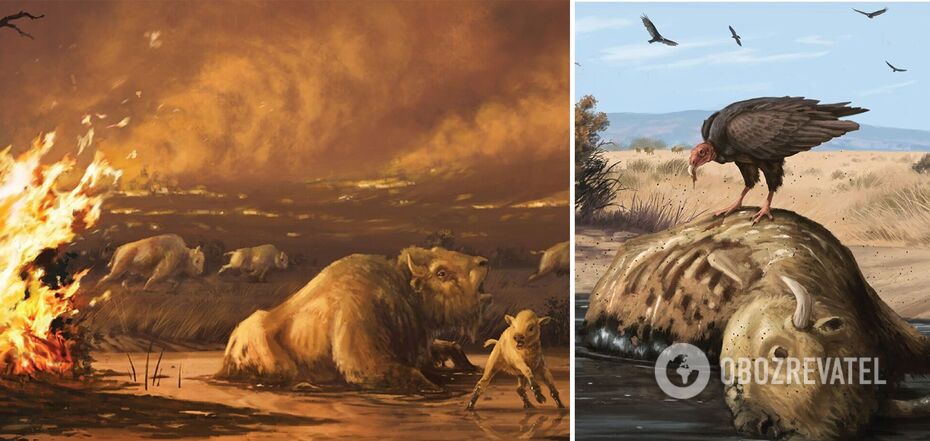News
Humankind probably exterminated Earth's megafauna 13,000 years ago: how it happened
Humanity is most likely directly involved in the extinction of megafauna species that occurred at the end of the last ice age about 13,000 years ago. Scientists believe that the giant animals died partly because of human activity, which led to large-scale fires during dry and hot periods.
This conclusion was reached by researchers who studied the fossilized remains in the La Brea Tar Pit in Southern California (USA). As IFL Science writes, they are concerned about their discovery, given the growing number of forest fires burning in many parts of America and Europe amid global warming.
About two-thirds of the planet's large mammals outside of Africa disappeared about 13,000 years ago at the end of the last ice age. It was the largest extinction since an asteroid hit the Earth and wiped out all the great dinosaurs.
Around the world, this mass extinction coincided with climate change and the emergence of new human colonies. However, scientists were still unsure of the exact factor that caused this extinction as they lacked reliably dated fossils and an accurate chronology.
"The problem was that no one could pinpoint exactly when most of these large mammals actually disappeared because the fossils are very inconsistent. It's hard to say much about what caused the extinction if you don't know when it happened," said Dr. Emily Lindsey, co-author of the study, which was published in the journal Nature, associate curator and director of the La Brea excavations.
To overcome this problem, Lindsey and her colleagues analyzed fossils from the La Brea Tar Pit that belonged to eight large mammal species, including coyotes, horses, saber-toothed cats, American lions, dire wolves, and the ancient camels Camelops hesternus. Radiocarbon analysis has shown that seven of these species became extinct about 13,000 years ago.
The La Brea Tar Pits are useful to scientists because the remains it preserve are invaluable for scientific research. By comparing them with data on climate, pollen and fire in the area, as well as data on human population movements and growth, the researchers were able to rule out some of the competing explanations for the mass extinction.
"The moment we found that the North American population really started to grow, we see an interval of profound climate and environmental change combined with unprecedented fire happening right here, and it's during this interval that all kinds of megafauna are disappearing," said UCLA graduate student Lisa Martinez, who was a member of the study.
The scientists' work has established a chain of connections, according to which climate warming, a decrease in tree pollen, and an increase in the number of people have led to the decline of large herbivores. According to their analysis, the loss of tree pollen also indicates an increase in the number of fires, many of which were caused by human activity.
"With the arrival of humans, we see significant changes in the frequency and intensity of fires," said Dr. Regan Dunn, a paleobotanist and assistant curator of the La Brea Tar Pits.
She added that 95% of the fires we see today are caused by anthropogenic sources: power lines, campfires, highways, cigarettes or something similar.
"In a sense, we already know what happened, and what we've learned from the past can help us understand what will happen in the future and how to plan better to avoid ecosystem collapses," she said.
Scientists warn that humanity is now in the same chain of events that led to the last mass extinction, and therefore it is important to pay attention to warnings from the past.
Earlier, OBOZREVATEL also explained what caused the complete extermination of the first people in Europe.
Subscribe to OBOZREVATEL on Telegram and Viber to keep up with the latest news



























